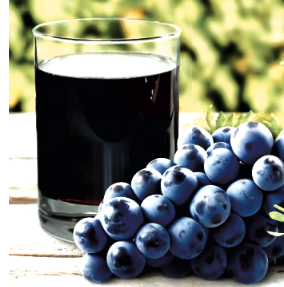You need protein daily to provide strength and flexibly to your muscles, tissues, skin, and the overall ongoing maintenance of your body. However, a little can go a long way. According to the Recommended Dietary Allowance (RDA), men need about 56 grams and women need about 46 grams, on average, each day.
 |
| Source: CDC |
To put this amount in perspective, 6 ounces of meat, fish, and/or poultry, which is the equivalent to two decks of playing cards, will provide about 50 grams of protein.
However, some folks would benefit with more, according to Stefan Pasiakos, Ph.D., a Nutritional Physiologist at the US Army Research Institute of Environmental Medicine in Natick, Massachusetts. “Older adults, physically active individuals, and overweight and obese adults attempting weight loss would benefit by consuming twice the amount of protein suggested in the RDA to preserve lean muscle mass,” claims Pasiakos. This is especially important for older adults as we all are naturally losing lean muscle tissue with each birthday.
Even more importantly, when it comes to consuming dietary protein, timing is everything. Research suggests that it is not just the amount of protein that you consume that is important, but also when you eat it during the day. Enjoying adequate amounts of protein at each meal has been shown to increase satiety, or that feeling of fullness, as well as maximize your body’s ability to repair and build new lean muscle. Unfortunately, while many Americans are consuming adequate amounts of protein daily, they are typically consuming the majority of it at dinner.
To reap all of the benefits protein has to offer, you should distribute your protein intake more evenly throughout the day, according to Pasiakos. Each meal should contain 20 to 30 grams of a high quality protein, such as lean meat, fish, poultry, eggs, and/or dairy to stimulate the synthesis of new muscle protein throughout the day, claims Pasiakos. The chart below shows how robust these foods are when it comes to providing protein:
Now here comes the dietary dilemma. According to the nutrition guidance associated with the United States Department of Agriculture’s, MyPlate, most adults should be consuming only about 6 ounces of foods from the protein group daily. Limiting the amount of servings from this group daily is recommended to help keep heart-unhealthy saturated fat at bay. An excessive amount of dietary saturated fat can increase the “bad” LDL cholesterol in your blood, and therefore, your risk of heart disease.
So, consider: (1) spreading your daily allotment of 6 ounces from the protein group among your three meals, and (2) make sure that you are also consuming protein-rich lean dairy with your meals to beef up your protein intake to ideally 20 to 30 grams at each meal.
Satiety and muscle mass aside, increasing your consumption of dairy foods will also provide your body with calcium, potassium, and possibly vitamin D -- three nutrients that Americans are also falling short of in their diet. A serving is a cup of milk or yogurt or about 1.5 to 2 ounces of reduced-fat cheese, each of which provides about 8 grams of protein, which is actually a tad more than the 7 grams found in an ounce of lean meat, fish, or poultry. While it’s recommended to consume 3 servings of lean dairy daily, most adults are consuming only about half that amount.
Here are some ways to healthfully spread out your daily protein intake so that you are consuming about 20 to 30 grams of protein at each meal.
At breakfast, enjoy a cheese and veggie omelet using 1 egg and 2 egg whites, leftover veggies, and a slice of reduced-fat cheese. Or, top a Greek yogurt with fruit and a whole grain cereal and swap the cream in your coffee with low fat milk for a morning java with more protein and less fat.
At lunch, pile a slice or two of reduced-fat cheese onto your lunchtime sandwich. Heart-healthy turkey, chicken, tuna, and roast beef are lean protein sandwich fillers that blend well with cheese.
After your balanced dinner, enjoy a container of your favorite nonfat yogurt topped with berries for dessert.
Be well, JSB
Follow me on Twitter: @JoanSalgeBlake







